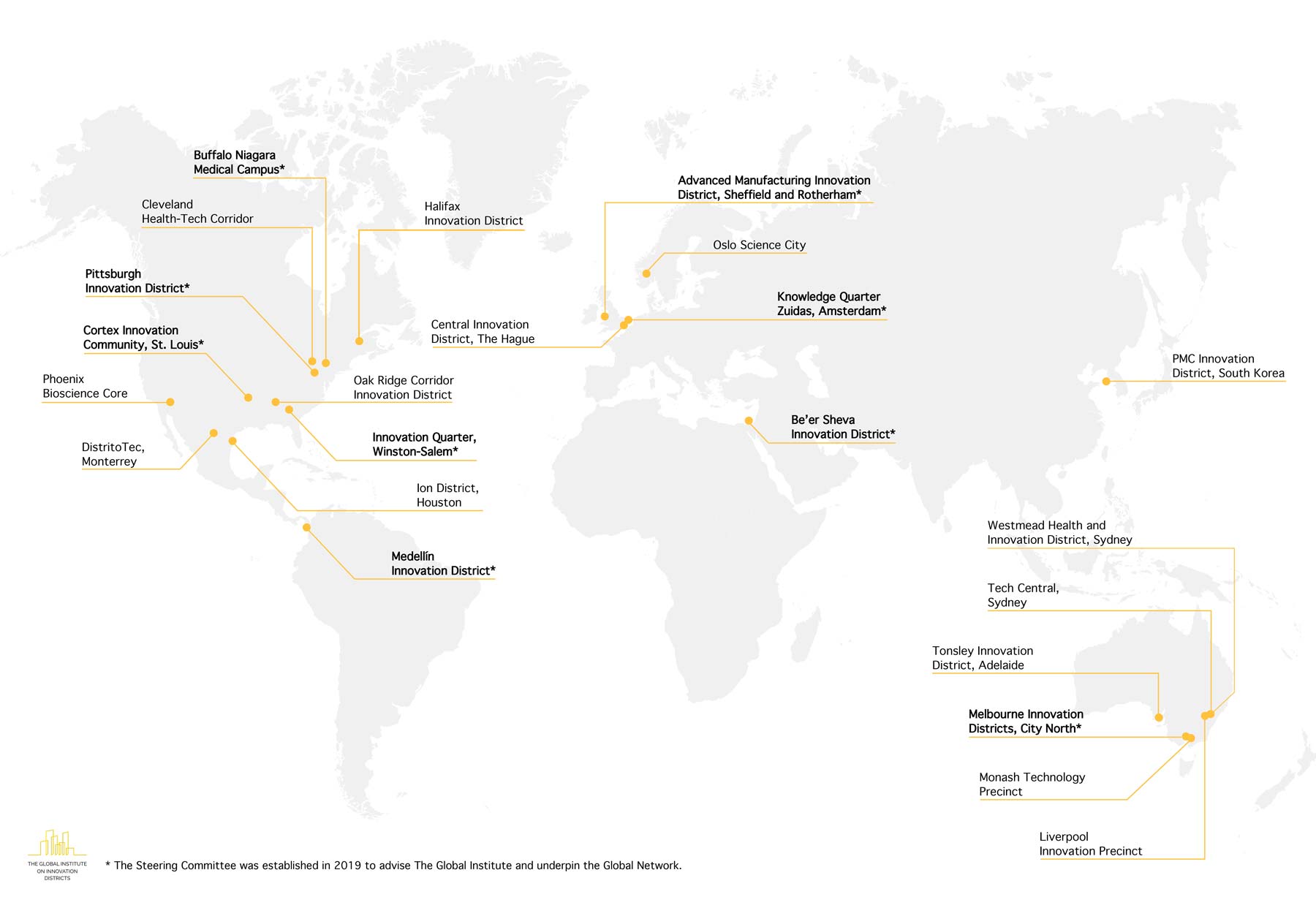Districts that joined The Global Network of Innovation Districts in 2022
In March 2022, 23 innovation districts from 10 countries worldwide, joined forces through the Global Network of Innovation Districts to advance one of the most promising models for 21st century innovation, work and urban living.
The 23 innovation districts taking part are located across Europe, North America, Latin America, the Middle East, Australia and Asia.

The Global Network recruited this initial group of districts to:
Create a powerful collective of districts worldwide, sharpening how districts work and learn together to evolve.
Advance their own districts, sharpening and strengthening the model of innovation districts.
Conduct cross district empirical analysis and elevate new findings through disseminating research, as well as advance districts’ positioning through the creation of investment prospectuses.
The program for Global Network “Pioneers”
The power of innovation districts lies in their unique attributes and capabilities. That’s why we developed a tailored approach for this group of 23 districts, whereby participating innovation districts, working with the Global Network for a minimum of two years, are engaging in the following set of activities below:


